Rust & Ruin: The Post-Industrial Future
Reading Aloud JMG's 'The Long Road Down: Decline & the Deindustrial Future'
Prolegomena: Over two decades ago, the Grandmaster of DOOM,
penned this classic, which established in broad brushstrokes the Grandmaster’s sundry motifs & principles, which were later widely utilized in his fiction & non-fictional works.It is essentially a meta-summary regarding Industrial society’s coming Long Decline & Demise & the contours of the Post-Industrial & Deindustrial world that replaces it over several centuries & millennia. Enjoy, Dear Readers & Listeners! 😉😘
The Long Road Down: Decline & the Deindustrial Future
Originally Published in 2004, Now Hosted at Ecosophia.net: Full Essay
The Long Road Down: The Unraveling of Industrial Civilization- The industrial age, built on a foundation of cheap fossil fuels, technological expansion, & limitless economic growth, is now entering its twilight phase. Resource depletion, demographic decline, & ecological overshoot are converging to erode the systems that have sustained modernity. As energy scarcity intensifies & global supply chains fracture, societies will be forced into painful adaptations. The long descent into deindustrialization will not be a sudden collapse but a grinding process of economic stagnation, social upheaval, & technological regression. The challenge ahead is not how to prevent this transition but how to navigate it with the least suffering.
Originally published online in 2004, this was my first attempt to set out the themes that ended up being central to my blog The Archdruid Report and to a half dozen or so books on the future of industrial society.
For more than three decades now, the world has been on notice that the long afternoon of industrial society is drawing to a close. The Club of Rome’s epochal report The Limits to Growth (1973), the first of many persuasive studies, warned that unrestricted economic growth would collide with hard planetary limits sometime in the early twenty-first century, unless expensive and politically unpopular steps were taken soon. Of course those steps weren’t taken at all. A failure of vision and political will on the part of leaders and constituencies alike threw away the decades that could have made a difference. Today we live in the shadow of that failure.
Yet an odd blindness affects attempts to make sense of our predicament. People on all sides of the debate talk as though the future has only two possible shapes: progress or apocalypse, either business as usual for the foreseeable future or a catastrophic slide into savagery and mass death. Whether the topic is global warming, renewable energy, fossil fuel depletion, or anything else, the same claims repeat like a broken record. One side insists that technology will inevitably solve our problems and yield a better life for all, while the other side brandishes worst case scenarios and talks of millions of corpses. It should be obvious that these aren’t the only possibilities. The fact that this isn’t obvious at all is worth exploring.
Most people would notice something odd if two meteorologists, discussing tomorrow’s weather on a wet autumn day, ignored all possibilities except clear weather or a sudden snowstorm. Yet the same sort of illogic goes unchallenged in debates about our future. Thus it’s crucial to set aside our assumptions, and look at what actually happens when civilizations run into the limits of their resource base. That’s happened many times in the past, but technological spurts and sudden collapses are rare. Far more common is a process nobody thinks about nowadays: decline.
The Historical Parallels
The Historical Parallels: Lessons from Past Collapses- Throughout history, civilizations have risen, flourished, & ultimately collapsed due to resource depletion, economic stagnation, & internal strife. The decline of the Roman Empire, the fall of the Mayan civilization, & the unravelling of the Late Bronze Age societies all share striking similarities with the trajectory of industrial civilization today. In each case, complex societies overextended themselves, exhausted their ecological bases, & failed to adapt before collapse set in. Industrial civilization, built on fossil fuels & unsustainable growth, now follows the same trajectory, with rising instability, dwindling resources, & fraying political systems accelerating its decline.
It’s unfashionable to suggest that we have anything to learn from the past. Quite possibly this is because history holds up an unflattering mirror to our follies. Those who recall the 1929 stock market bubble, for example, can find every detail repeated in the tech market frenzy of the late 1990s. The same claims that a “new economy” and new technology made the business cycle obsolete, the same proliferation of investment vehicles (investment trusts then, mutual funds today), the same airy confidence that stock values would go up forever and fundamentals didn’t matter: fast forward seventy years, and the follies of 1929 replayed in 1999, cheered on by economists who, of all people, should have known better.
The rise and fall of civilizations offers the same embarrassment on a grander scale. We know beyond the slightest doubt what happens to societies that outrun their resource base: they go under. Clive Ponting’s A Green History of the World (1992) documents dozens of past cultures that ended up in history’s wrecking yard for exactly this reason. One highly relevant example is the ancient Maya, who flourished on the Yucatan Peninsula of Central America while Europe struggled through the Dark Ages.
Like modern industrial society, the Maya built their civilization on a nonrenewable resource base. In their case it was the fertility of fragile tropical soils, which couldn’t support intensive corn farming forever. On that shaky foundation they built an extraordinary civilization with fine art, architecture, astronomy, mathematics, and a calendar more accurate than the one we use today. None of that counted when the crops began to fail. Mayan civilization disintegrated, cities were abandoned to the jungle, and the population of the Mayan heartland dropped by 90%.
The parallels go deeper, for the Maya had other options. They could have switched from corn to more sustainable crops such as ramon nuts, or borrowed intensive wetland farming methods from their neighbors to the north. Neither of these happened, because corn farming was central to Maya political ideology. The power of the ahauob or “divine lords” who ruled Maya city-states depended on control of the corn crop, so switching crops or farming systems was unthinkable. Instead, Maya elites responded to crisis by launching wars to seize fields and corn from other city-states, making their decline and fall far more brutal than it had to be.
Even so, the Maya decline wasn’t a fast process. Maya cities weren’t abandoned overnight, as archeologists of two generations ago mistakenly thought, but went under in a “rolling collapse” spread across a century and a half from 750 to 900. Outside the Maya heartland, the process took even longer. Chichen Itza far to the north still flourished long after cities such as Tikal and Bonampak were overgrown ruins, and Mayan city-states on a small scale survived in corners of the Yucatan right up to the Spanish conquest.
Map the Maya collapse onto human lifespans and the real scale of the process comes through. A Maya woman born around 730 would have seen the crisis dawn, but the ahauob and their cities still flourished when she died of old age seventy years later. Her great-grandson, born around 800, grew up amid a disintegrating society, and the wars and crop failures of his time would have seemed ordinary to him. His great-granddaughter, born around 870, never knew anything but ruins sinking back into the jungle. When she and her family finally set out for a distant village, the last to leave their empty city, it would never have occurred to her that her quiet footsteps on a dirt path marked the end of a civilization.
The Olduvai Theory
The Olduvai Theory: Industrial Civilization’s Short-Lived Surge- The Olduvai Theory, first proposed by Richard Duncan, suggests that industrial civilization is a brief anomaly in human history--an unsustainable spike in energy consumption that will inevitably collapse back to pre-industrial levels. According to this model, per capita energy use peaked in the early 21st century & will decline rapidly, leading to the unravelling of complex societies. As fossil fuel depletion, infrastructure decay, & ecological limits converge, will humanity adapt to a lower-energy existence, or will the descent be marked by chaos & conflict? If the theory holds, we may witness the final decades of industrial modernity before returning to a world shaped by localized economies & simpler ways of life.
This same pattern repeats over and over again in history. Gradual disintegration, not sudden catastrophic collapse, is the way civilizations end. It usually takes somewhere between 150 and 350 years for a civilization to decline and fall. This casts a startling light on today’s crisis. It took America two centuries of incremental change to transform itself from an agrarian society to its current status as an aging industrial behemoth. Now, with its resource base failing, it faces the common fate of civilizations. Yet if that fate follows its usual timeline, it could easily take two more centuries of incremental change to transform America to an agrarian society again.
Startling as this seems, it’s supported by telling evidence. Consider our dwindling oil resources. The Hubbert Curve, devised by geologist M. King Hubbert in the 1950s, tracks production over time for any oil reserve from a single oil well to a planet. It’s a bell shaped curve: oil comes slowly at first, rises to peak production, then falls gradually to zero. The peak arrives when roughly half the oil is gone. The continental US reached peak in 1970, and production has slumped ever since. Many energy scientists put the worldwide peak before 2010. After the peak, according to the Hubbert Curve, global oil production will decline at about the same rate it rose before. With a peak before 2010, production in 2030 will be somewhere around production in 1975 or 1980, or maybe 20 billion barrels. 2030’s oil will have to meet the needs of a doubled world population and a world in crisis, but 20 billion barrels is still a lot of oil.
To misquote T.S. Eliot, this is the way the oil ends, not with a bang but a trickle. Other fossil fuels are headed the same way, along with uranium for nuclear power, but they can help cushion declining oil production for a while before they hit their own Hubbert peaks. Renewable energy sources can provide only a small fraction of the energy we now get from fossil fuels, but that fraction can help cushion the decline and stretch dwindling oil and coal reserves. The problem we face isn’t having no energy at all. It’s having to make do with less and less each year, until finally we get down to levels that can be sustained indefinitely.
The logic of the Hubbert Curve provides the framework for Richard Duncan’s Olduvai Theory, an uncompromising look at a deindustrial future. Duncan starts with White’s Law, a widely accepted rule that culture evolves as the amount of energy per capita goes up. Globally, energy per capita stood at very modest levels until 1800, when fossil fuels sent it skyrocketing to its all-time peak in 1979. At that point, Duncan shows, two centuries of explosive progress began to unravel.
After 1979, global energy per capita declined as rising population outstripped modest increases in energy production. As energy production itself drops after the Hubbert Curve peaks, the decline accelerates. Follow the curve, and by 2030 global energy per capita is where it was in 1930, around a third of its 1979 value. Duncan argues that the industrial age is a pulse waveform, a single, bell-shaped, nonrepeating curve centered on 1979. Since no renewable energy resource can provide more than a small fraction of the immense amounts of fossil fuel energy we’ve squandered in the recent past, he predicts that the millennia of low tech cultures before the industrial pulse, when nobody knew about the fantastic treasure of free energy locked up in fossil fuels, will be balanced by millennia of low tech cultures after the industrial pulse, when the treasure will be gone forever.
The Power of Myth
Collapse & the Power of Myth: How Stories Shape the End of Civilizations- Throughout history, myths have provided meaning to civilizations even in their decline. Myths of divine punishment & rebirth accompanied the fall of Rome; the crumbling of medieval Christendom gave rise to new myths of Enlightenment & reason. Today, as industrial civilization faces its own slow collapse, we are witnessing competing myths emerge--some promising technological salvation, others warning of irreversible catastrophe. What role will myth play in the deindustrial future? Will societies craft narratives that help them adapt to energy descent & ecological limits, or will they cling to illusions that accelerate their downfall? The myths we choose to believe will determine whether we navigate the coming crisis with wisdom or folly.
Many people find predictions of this sort extremely upsetting. Believers in progress insist that human ingenuity will get progress going again somehow and lead to a more advanced society than we have today. Believers in apocalypse insist that incremental declines will bring about catastrophe somehow and lead to mass death and a Road Warrior future. The concept of a slow descent to the agrarian cultures of the deindustrial future offends both. In my experience, many believers in either one literally can’t fit their minds around a third alternative.
Blind spots of this sort shows the hidden presence of myth. Many people nowadays think only primitive people believe in myths, but myths dominate the thinking of every society, including our own. A myth is a story that makes sense of the world. Most ancient cultures took their myths from religion; most modern societies take theirs from science or political ideology. Two competing stories provide modern society with its most popular myths. You know them both.
The first is called the progressivist myth. According to this story, all of human history is a drama of progress. From primitive ignorance and savagery, according to the progressivist myth, people climbed step by step up the ladder of civilization. Knowledge gathered over generations made it possible for each culture to go further than the ones before it. With modern times, progress went into overdrive, and it’s still in overdrive today. The purpose of human existence is to make this upward climb possible so that our descendants can someday reach the stars.
The second is called the separativist myth. According to this story, all of human history is a tragic blind alley. Once people lived in harmony with their world, each other, and themselves, but that time ended and things have gone downhill ever since. Vast cities governed by bloated bureaucracies, inhabited by people who have abandoned spiritual values for a wholly material existence, mark the point of no return. Sometime soon the whole rickety structure will come crashing down, overwhelmed by sudden crisis, and countless people will die. Only those who abandon a corrupt and doomed society will survive to build a better world.
Both stories are versions of the much older religious myth of apocalypse, which includes vast disasters followed by a millennium of bliss for the chosen. Sociologist Philip Lamy showed in his book Millennial Rage (1996) that most people, including most Christians, now embrace “fractured” versions of the apocalypse myth which focus on one theme out of the complexity of the older myth. The progressivist and separativist myths are good examples, the former stressing the hope of future bliss, the latter the threat of catastrophe.
The mythic nature of these viewpoints shows up clearly when either one is measured against history. Believers in progress insist that human history has always been progressive, but a look at the past challenges this comfortable faith to its core. Between the agricultural revolution and the industrial age, human life changed little; all things considered, the life of an peasant in Egypt under the Pharaohs was not much different from that of a peasant in seventeenth-century France (both even had a Sun King). Industrialization broke the pattern only by tapping into stored energy in the earth to launch two centuries of exuberant growth.
Everything necessary for industrial society, except a way to turn fossil fuels into mechanical energy, existed long before the industrial revolution. Renewable energy sources? Wind power, water power, and biomass were all used extensively in the preindustrial past. Scientific knowledge? The laws of mechanics were worked out in ancient times, and a Greek scientist even invented the steam turbine before the birth of Christ; without fossil fuels it was a useless curiosity. Human resourcefulness and ingenuity? People in past ages were as resourceful and ingenious as we are. Fossil fuels make the one crucial difference between ancient cultures and modern industrial society. As fossil fuels run out and the ecological consequences of their misues come home to roost, that difference will go away. As for those who simply insist that “we can’t go back,” that’s easy to say, but we no longer have the resources to go forward, and soon we won’t even be able to stand still. What other direction do they have in mind?
Believers in apocalypse, for their part, insist that our civilization’s end will be sudden, catastrophic, and total. As shown earlier in this essay, history doesn’t support that claim. Civilizations take time to fall, the resource base of industrial society is shrinking but it’s far from exhausted, the impact of global warming and other ecological disruptions build slowly over time, and ruling elites and ordinary citizens alike have every reason to hold things together as long as possible. The history of the last century shows that industrial societies can endure tremendous disruption without dissolving into a Hobbesian war of all against all, and people in hard times are far more likely to follow orders and hope for the best than to join the rampaging mobs that play so large a role in survivalist fantasies. The sorry history of the Y2K noncrisis a few years ago may also make a good reminder that risks of catastrophe can be overrated.
Of course it’s possible that some ultra-catastrophe is waiting to wipe us all out, just as it’s possible that scientists might pull a technological rabbit out of a hat and give industrial society a new lease on life. It’s also possible that aliens from space might go zipping through our atmosphere in flying teacups next Tuesday, dropping radioactive vegetables on everyone named Fred. The fact that this last possibility can’t be ruled out doesn’t make it reasonable to gamble our future on being able to power factories with glow-in-the-dark cabbages!
It’s reasonable to consider catastrophe and continued progress as possibilities, but both have to be weighed against the realities of our present situation and the evidence of history. Both require a deus ex machina on a grand scale to change the course of events: ordinary catastrophes aren’t enough to bring industrial society down overnight, just as ordinary technological progress isn’t enough to get industrial society out of the mess it’s made for itself. Without an extraordinary event, our civilization is headed down the well-trodden path of decline. If there’s a point in planning for the future at all, it makes sense to plan for the one we’re most likely to get.
Both the progressivist myth and the separativist myth have poweful emotional appeal; that’s why they’re popular. The myth of perpetual progress comforts those people who have made their peace with society as it is, and who want to believe that their lives are part of a process which leads eventually to better things. The myth of imminent apocalypse comforts those people who cannot accept society as it is, and want to believe in a catastrophe that topples the proud towers of a civilization they loathe. Still, the fact that a belief is emotionally powerful and comforting doesn’t make it true.
The Course of Decline
The Course of Decline: From Complexity to Collapse- Civilizations rise by harnessing energy, organizing large populations, & developing intricate institutions, but these same factors eventually become liabilities. The modern world, with its interdependent global economy & fragile supply chains, is particularly vulnerable to systemic shocks. As resource depletion accelerates, climate instability worsens, & technological stagnation sets in, the burden of maintaining complexity becomes unsustainable. Governments will increasingly resort to authoritarian measures to manage declining living standards, while regions will fragment into localized economies of necessity. The coming decades will not be marked by a single catastrophic collapse but rather by a drawn-out process of simplification, salvage, & adaptation as societies are forced to abandon the high-energy lifestyles that defined the fossil-fuel age.
To see past mythology to the hard realities of the future takes a clear sense of our predicament. More than six billion people live on a planet that can support one billion indefinitely. We can’t meet everyone’s needs now, and the resources to maintain even today’s standards of living are running short. Resource wars have already begun – the 2003 US invasion of Iraq may someday be recalled as the first of the Oil Wars. Meanwhile global warming boosts the cost of natural disasters so fast that one of the world’s largest reinsurance firms, Swiss RE, warns that this all by itself will bankrupt the world economy before 2060.
Leave out the deus ex machina of progressive and apocalyptic mythologies, map the results onto a scale of human lifespans, and a likely future emerges. Imagine an American woman born in 1960. She sees the gas lines of the 1970s, the short-term political gimmicks that papered over the crisis in the 1980s and 1990s, and renewed trouble in the following decades. Soaring energy prices, shortages, economic depressions, and resource wars shape the rest of her life. By age 70, she lives in a beleaguered, malfunctioning city where half the population has no reliable access to clean water, electricity, or health care. Shantytowns spread in the shadow of skyscrapers while political and economic leaders keep insisting that things are getting better.
Her great-grandson, born in 2030, manages to avoid the smorgasbord of diseases, the pervasive violence, and the pandemic alcohol and drug abuse that claim half of his generation before age 30. A lucky break gets him into a technical career, safe from military service in endless wars overseas or “pacification actions” against separatist guerrillas at home. His technical knowledge consists mostly of rules of thumb for effective scavenging, cars and refrigerators are luxury items he will never own, his home lacks electricity and central heating, and his health care comes from an old woman whose grandmother was a doctor and who knows something about wound care and herbs. By the time his hair turns gray the squabbling regions that were once the United States have split apart, all remaining fuel and electrical power have been commandeered by the new governments, and coastal cities are being abandoned to the rising oceans.
For his great-granddaughter, born in 2100, the great crises are mostly things of the past. She grows up amid a ring of sparsely populated villages surrounding an abandoned core of rusting skyscrapers visited only by salvage crews who mine them for raw materials. Local wars sputter, the oceans are still rising, and famines and epidemics are a familiar reality, but with global population maybe 15% of what it was in 2000, humanity and nature are moving toward balance. She learns to read and write, a skill most of her neighbors don’t have, and a few old books are among her prized possessions, but the days when men walked on the moon are fading into legend. When she and her family finally set out for a village in the countryside, leaving the husk of the old city to the salvage crews, it never occurs to her that her quiet footsteps on a crumbling asphalt road mark the end of a civilization.
What Can Be Done
Surviving the Great Simplification: Adapting to a Post-Industrial Future- The collapse of complex societies is often framed as a catastrophe, yet it also presents opportunities for adaptation & renewal. As centralized systems fail, communities that embrace low-tech solutions, distributed energy production, & resource conservation will have the best chances of stability. Relocalization--bringing food production, industry, & governance back to a human scale--will be a defining feature of the post-industrial world. Instead of fighting to sustain unsustainable systems, the focus must shift to fostering adaptive strategies: permaculture, appropriate technology, & decentralized trade networks. Those who recognize the necessity of simplification & embrace it early will be far better positioned than those who cling to failing paradigms.
People try to sense the shape of the future for much the same reason that drivers watch the road ahead: it’s easier to manage crises and take advantage of opportunities if you have enough time to react. So far the two myths already discussed have dominated planning for the future. Believers in progress hold that the best way to face the future is to pour money into research and development, so that new technologies to drive progress will be ready in time. Believers in apocalypse hold that the best way to face the future is to build isolated enclaves stocked with food and weaponry, where those who plan on surviving doomsday can hole up and wait it out.
If we face an age of decline, though, neither of these approaches is worth much. Research and development might be useful if focused on simple, sustainable technologies, but projects of this sort need to be done soon: as decline gets under way, funding for scientific research will be one of the first things cut. As for holing up in a mountain cabin, the slow pace of decline makes this utterly irrelevant. No matter how much canned food and ammo you have, it’s not going to last a couple of centuries, and neither are you.
A different future requires a different kind of thinking. The crucial needs that must be met in an age of decline are damage control, cultural survival, and the building of a new society amid the ruins of the old. Political and business interests aren’t going to meet these needs, or do anything else helpful; oil is to the modern industrial nations what corn was to the ancient Maya, and the ahauob of Washington and Wall Street have turned to war just as their Maya equivalents did. Fortunately, all three needs can be met by individuals and small groups with limited resources, and projects of this kind are being done on a small scale already.
Damage control focuses on ways to keep the impact of decline from costing more than it has to. The great challenge here is that most people in the developed world have no idea how to survive outside the cocoon of industrial society. As technology unravels, infrastructure breaks down, and local disasters hit, people will have to provide what they need for survival by their own efforts, from locally available materials, and yet most people nowadays can’t even light a fire to stay warm without matches or a lighter. People will have to learn survival, first aid, and skills of self-reliant living to meet this challenge. Groups can build on this by forming support networks and working out overlapping specialties, so people can draw on a wider range of skills.
The temptation to rely on stockpiles of food, technology, weapons, or precious metals to get through the impact of an age of decline is natural, but fatal. For two centuries machines and their products have been cheaper than skilled human beings. The result is a habit of valuing things over skills and, ultimately, a “prosthetic society” in which we’re taught to neglect abilities and then pay for technological replacements: we use day planners instead of training our memories, buy bread machines instead of learning to bake, watch television instead of using our imaginations. That has to be unlearned in a hurry. In hard times, if you have a stockpile, you’re a sitting target for other people interested in removing you from your stockpile and enjoying it themselves – but if you have valuable skills you can share and teach, everyone’s your friend.
These same principles govern strategies to meet the other two needs. Cultural survival focuses on hanging onto the heritage of the last few thousand years. That’s a tall order, because nearly all of it is brutally vulnerable to an age of decline. Nearly all books printed in the last century and a half are on high-acid paper, which gradually turns back to sawdust; librarians are already struggling to preserve collections of disintegrating nineteenth-century books. CDs and DVDs, like other electronic media, have much shorter lifespans, and won’t be playable anyway in a low tech future. When people are struggling to survive, literature, music, art, and science aren’t usually very high on their list of priorities anyway.
Any effort toward cultural survival, in other words, will have to involve ruthless sorting. Today’s sprawling libraries will need careful winnowing to sort out collections small enough to be copied by hand if it comes to that. Musical forms that can be passed on as living traditions will be more likely to make it, which means folk music has a better chance than Beethoven’s Ninth Symphony. A huge amount will inevitably be lost; the job at hand is to try to make sure that the best possible selection gets through.
One thing that’s sometimes been suggested by scientists, a book packed with everything science has discovered so far, is more problematic. History shows that the scientific treatises of one age become the fossilized dogmas of the next, and people in a deindustrial society, given a book with all the answers, could too easily end up thinking that the way to answer any question was to look it up in an old book. That way lies stagnation. Far better would be a textbook on scientific method, treatises on a few useful sciences such as ecology and mechanics, and enough hints and fragments to tantalize future thinkers into launching investigations of their own.
The work of building a new society, finally, will be much easier if the process starts now. During the last two centuries, the quickest way to prosper was to ride the wave of progress, using more energy, more resources, and more technology than your competitors. For the next two centuries, the quickest way to prosper will likely stand this rule on its head. Those who accept the reality of decline and get by on less energy, less resources, and less technology than their competitors will win out. The irony is that now, before the immense knowledge base of industrial society begins to come apart, is the best time to look for ways of living that use less of what we won’t have soon.
Organic farming is an excellent case in point. In the last century organic agriculture has made immense strides, to the point that it’s now possible to grow a spare but adequate diet year round for one person on less than 1000 square feet of soil, with only hand labor and no fossil fuel inputs at all, and do it while increasing the long term fertility of the soil. These methods may turn out to be our civilization’s greatest gift to the future, provided they survive the approaching age of decline. Today they’re covered in detail in dozens of books; whether that will be true in a hundred years depends on what we do right now.
Scores of other technologies, skills, and traditions of high value to a future low tech society can be found with a little searching. Consider the haybox. If your great-grandmother lived in Europe or North America she probably had one. She brought food to a boil, popped it into a box full of insulating material (such as hay), and left it there to cook by residual heat, saving most of the fuel she would have needed to cook the same dish on the stove. Haybox technology could make a future of energy shortages much more livable, but only if it’s brought out of museums and put back into circulation before the information gets lost.
The point to these anecdotes is simple but far-reaching. If people come to terms with the future now, and begin assembling and using skills and lifeways our deindustrial descendants can follow, the approaching age of decline can be made less traumatic than it will otherwise be. Government and business won’t help; they’ll doubtless cling to the leavings of industrial society the way barbarian chieftains in the Dark Ages clung to the trappings of Roman authority long after the Roman Empire was defunct. Yet individuals, groups, and local communities can accomplish much by starting on the long road down to the deindustrial future.
The deindustrial societies of the future need not be condemned to medieval squalor unless we fail to act now. It’s possible to have a cultured, literate, humane society with thriving cities and a vigorous exchange economy on a very limited resource basis. During the Tokugawa period (1603-1868), for example, Japan closed its borders to the outside world in a successful bid to stay out of European colonial empires. With a large population and few natural resources, Tokugawa Japan ran almost entirely on human muscle. Yet this was one of the great periods of Japanese art, literature and philosophy; literacy was so widespread that the three largest cities in Japan had 1500 bookstores among them, and most people had access to basic education, health care, and the necessities of life. If we get past the distractions of emotionally appealing mythologies, face the future squarely, and start getting ready for it now, future deindustrial societies could achieve as much. That goal is within reach, and it’s hard to think of a better gift we can offer the future.
From Peak Prosperity to the Great Unraveling: The Inescapable Logic of Decline- Every great civilization has a lifespan, & industrial modernity is no exception. Built on the assumption of endless energy & perpetual economic expansion, it now faces the hard limits of ecological overshoot & resource depletion. Once buoyed by fossil-fueled growth, the global economy is now strained under debt, demographic contraction, & rising material scarcity. Automation & technology will not reverse these trends; they will only accelerate inequality & the breakdown of centralized systems. The future is not Star Trek but something far more local, decentralized, & constrained. The real question is whether we will accept the realities of contraction & prepare accordingly or be dragged into crisis unprepared.
Your Support is vital for Smelting the DOOM & keeping it HOT & FRESH off the Furnace!
If you enjoyed the read, I would greatly appreciate it if you subscribed to a Monthly or Yearly pledge to support my work so that I may continue Smelting DOOM for your displeasure!
Alternatively, you can tip here:
Thank You, Dear Readers, for all your Support!




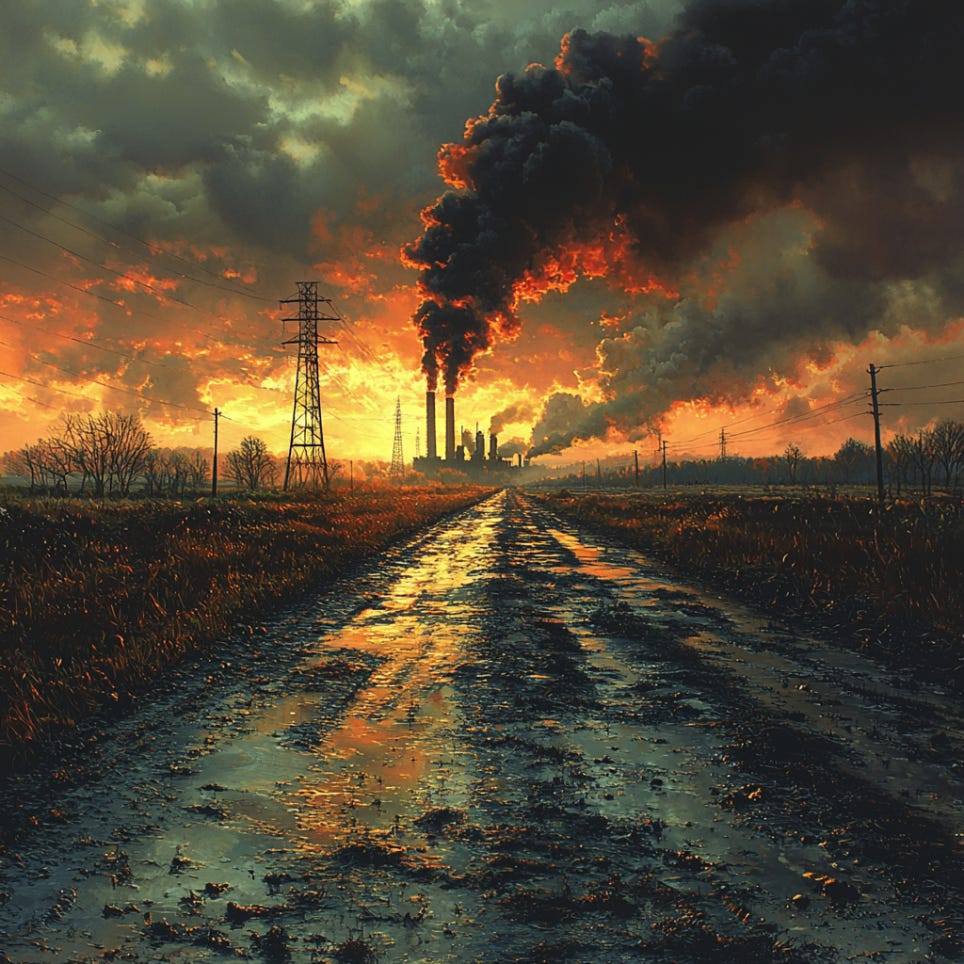
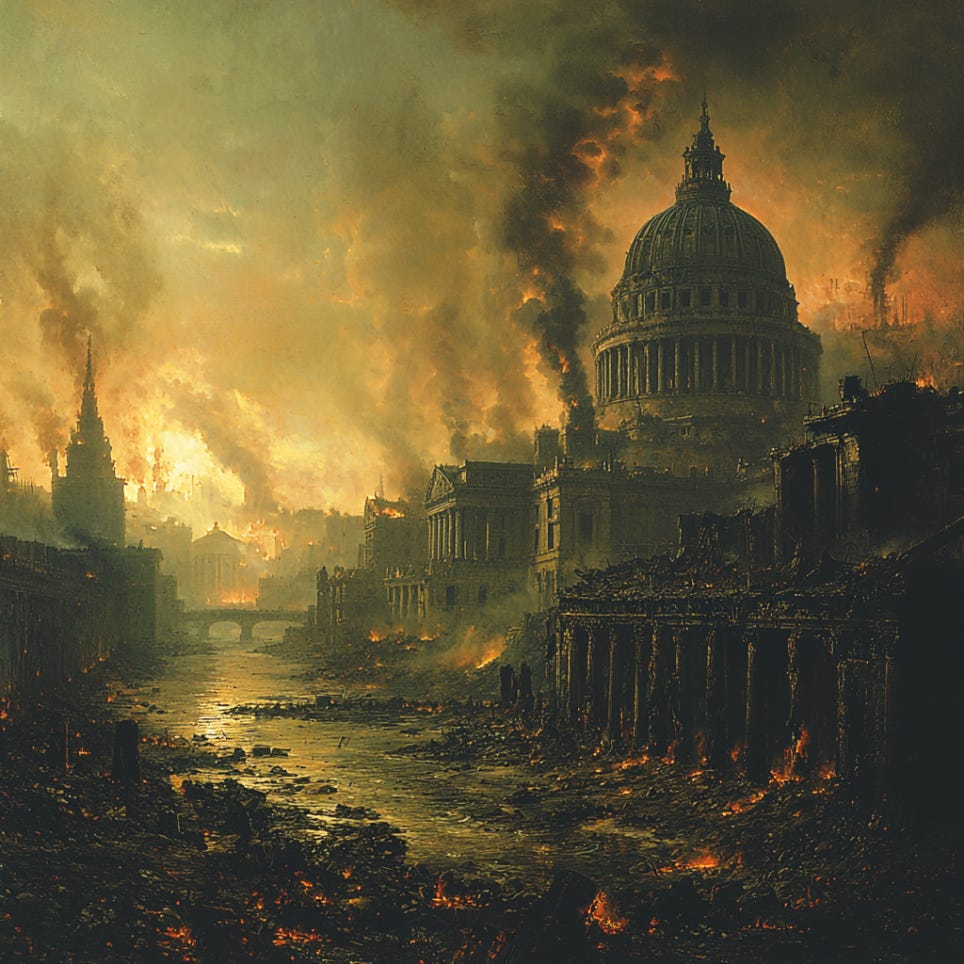
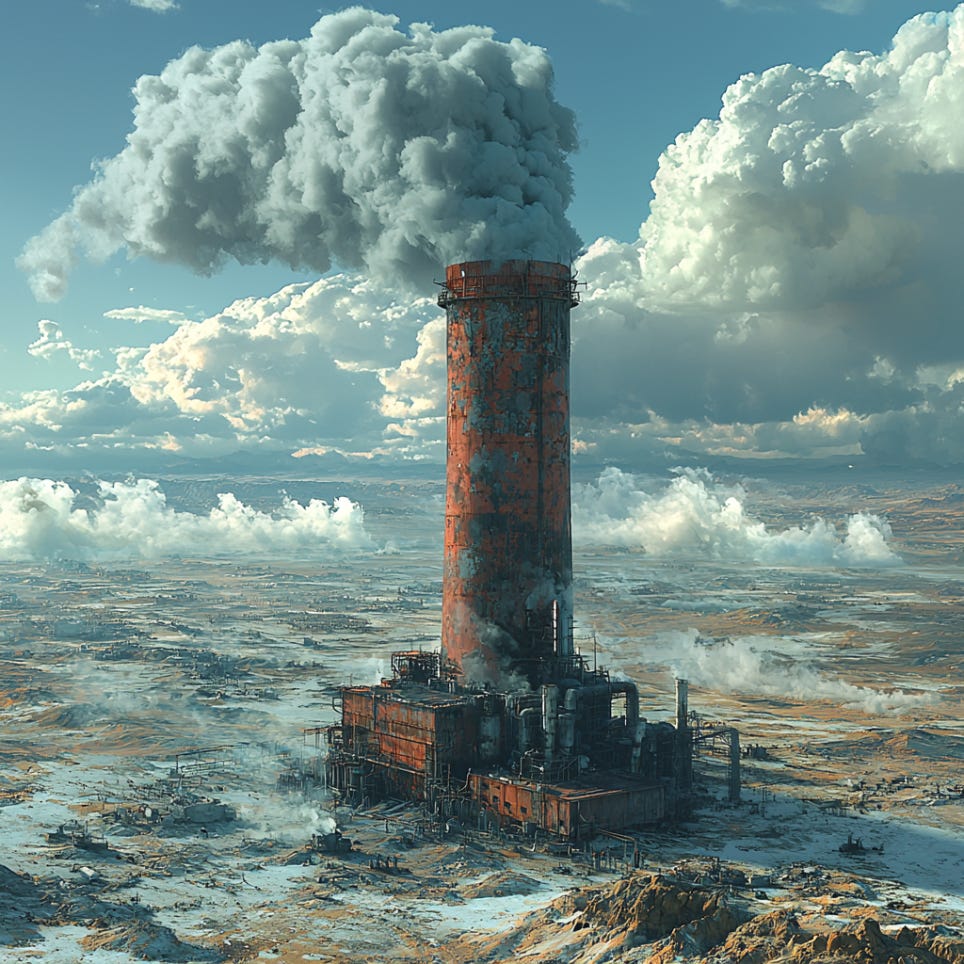
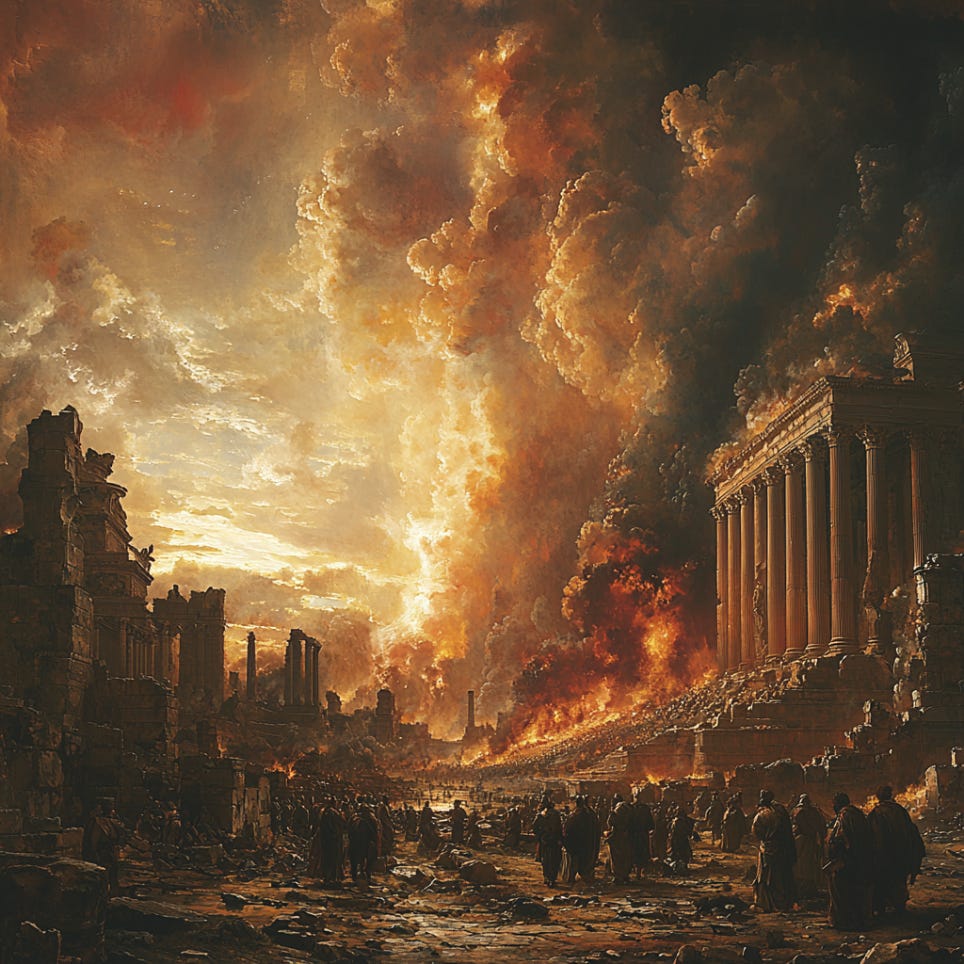
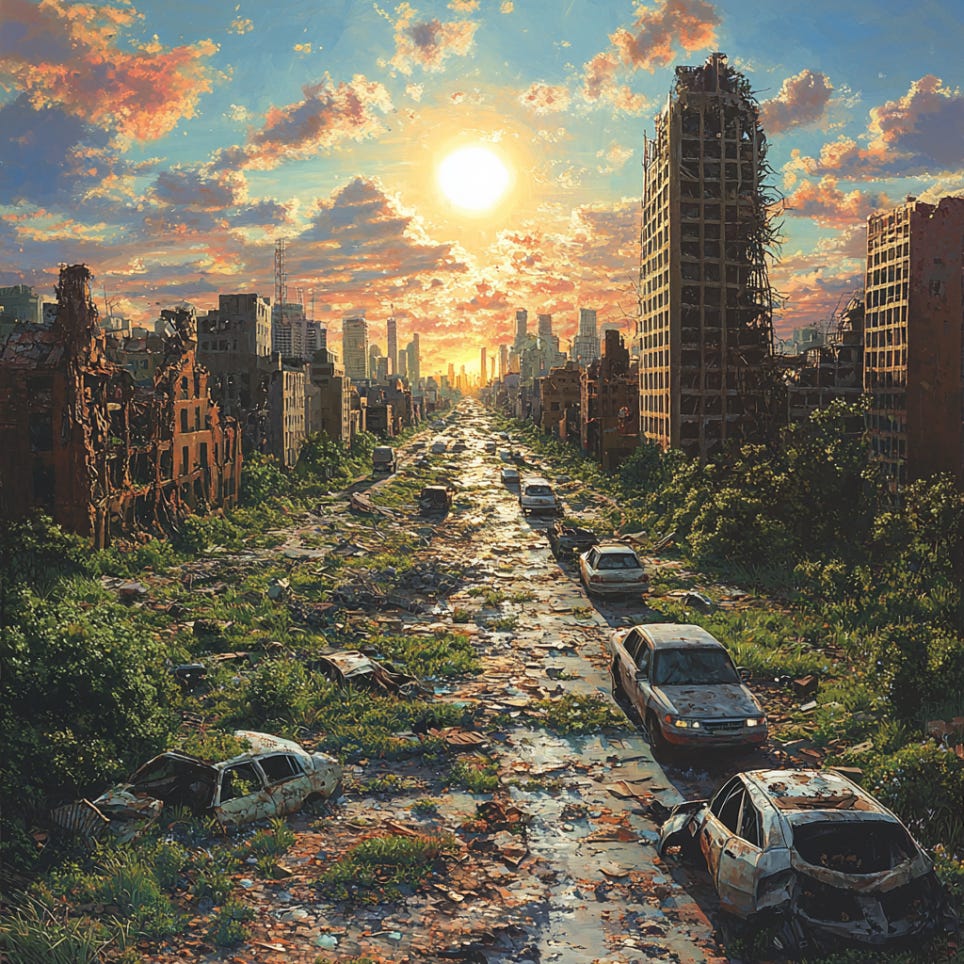
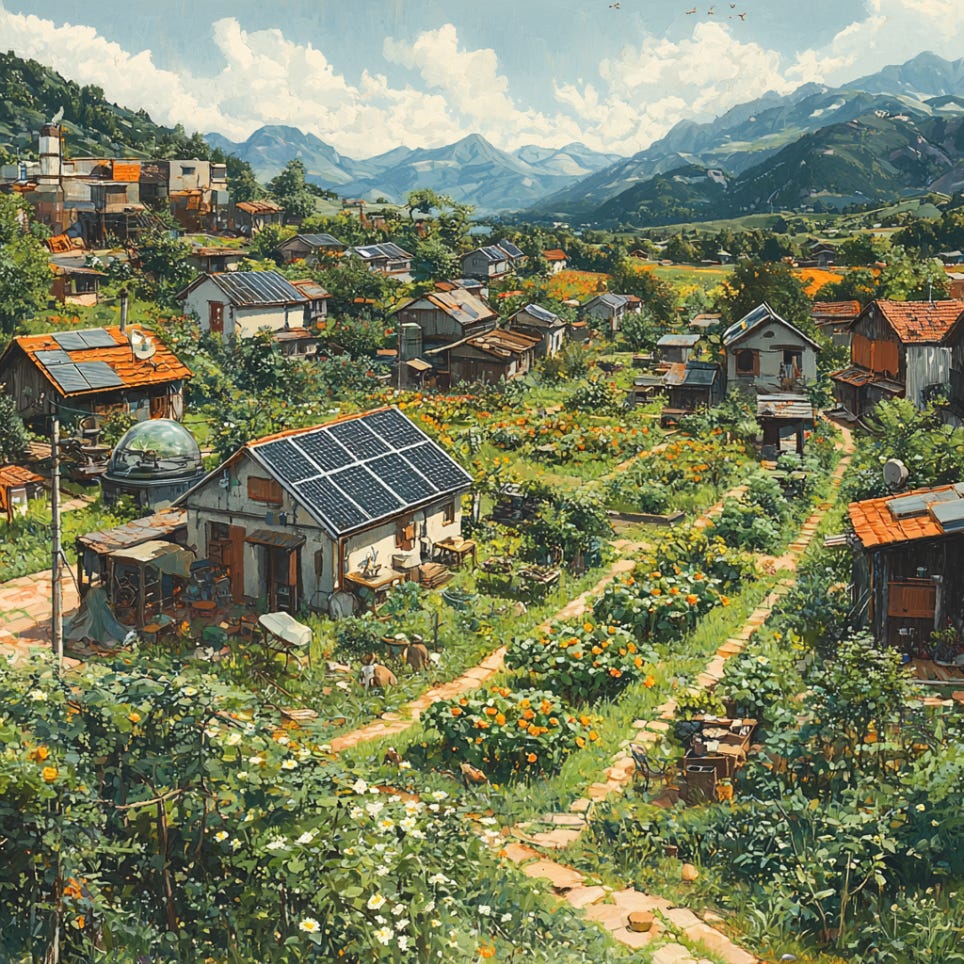
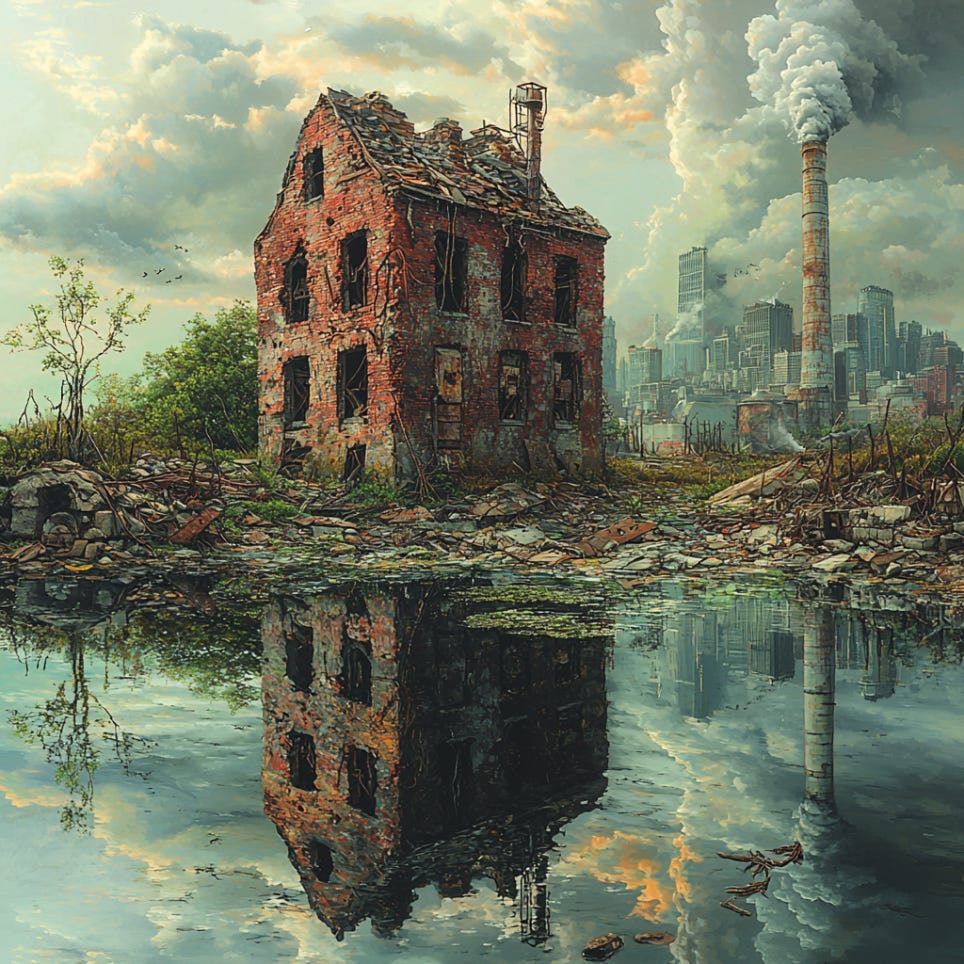
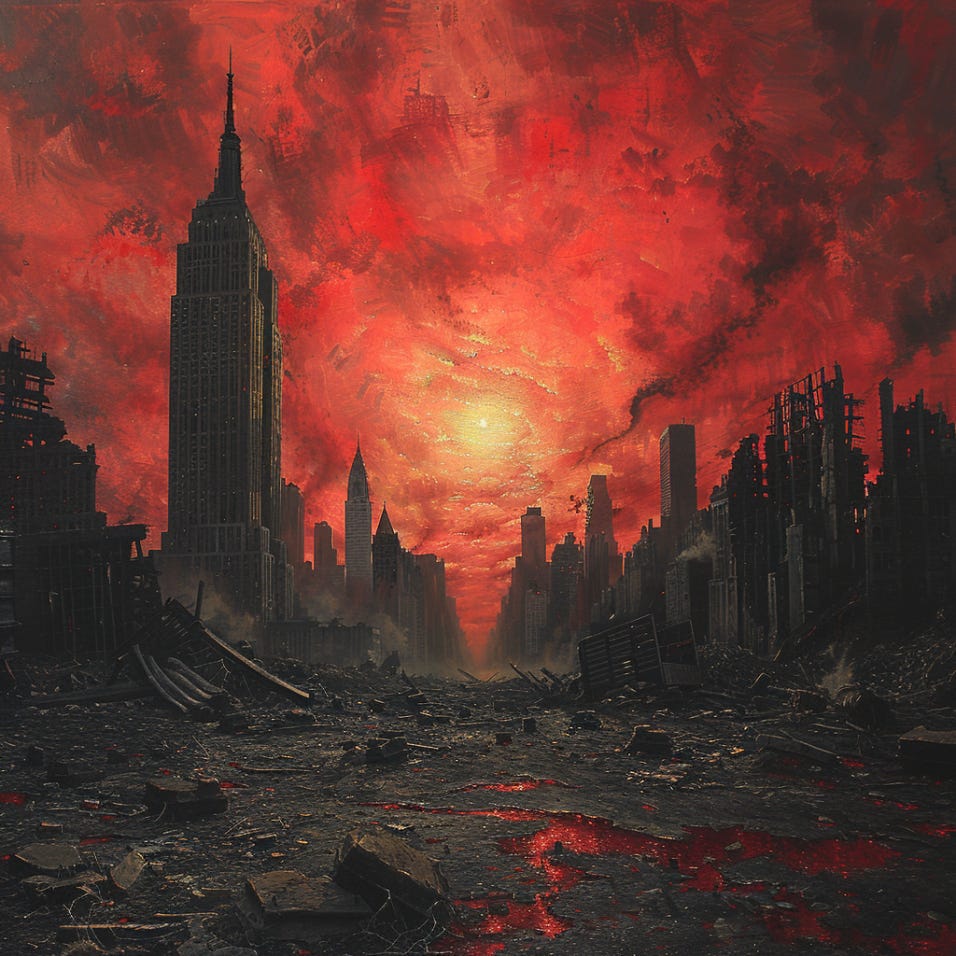

I like how the author of this essay claims he's a DOOM prophet, and than ends up being terminally optimistic. xD That said, I have some general comments.
> After the peak, according to the Hubbert Curve, global oil production will decline at about the same rate it rose before.
This has been proven true for CONVENTIONAL oil reserves. But what Hubbert, and the essay's author, couldn't have predicted was tight oil, which is currently being exploited. Even with all the talk about EROI (energy return on investment: how much energy you get per unit of energy invested, into drilling, fracking and processing) we're currently still comfy and cozy due to nonconventional oil bying us a few more decades.
This puts a tiny little chink in the entire thesis, although it's base assumptions and basic derivation are all rock solid: modern global civilization is using non-renewable resources, and it obviously can't continue once they run out.
> it’s now possible to grow a spare but adequate diet year round for one person on less than 1000 square feet of soil, with only hand labor and no fossil fuel inputs at all
This is science fiction to my ears. That's a plot of land 10 by 10 meters. At least the mathematics of energy flow eke out some basic sense, as 1000 square feet (110 square meters) has a total energy inflow from Sun (averagin out everything, INCLUDING the weather) of 150 W/m2 * 110 m2 = 16 kW (approximate, and depending on location), and a human needs 100 W. So the conversion efficiency needs to be only 0.6% for this to work, which should be OK (crops normally convert 1-3% of their energy input into edible food). However, the conversion efficiency still makes me a little jittery, as that no doubt assumes modern advanced crop varieties, and I'm assuming it doesn't take into account pests or drougths. So I would imagine this claim is just marketing overselling the idea, in reality you probably need 10 times as much land for this to be RELIABLE, and that's for just a single person, which means you need a proper field worked by the entire family for this to work in practice. Yet this is labor-intensive work, done for subsistence reasons, so I fail to see how this is actually an improvement over the medieval agriculture (at least in the context of Europe). Back then a single person could plow and plant the entire field, and he needed help only during the harvest (which lasted a few days per year). That's a vastly better use of human time, especially in a subsistence regime.
You know what can compete with medieval agriculture? Abiotic chemical synthesis of food. THAT has a promise of conversion efficiency above 50%, meaning a few square meters of thermosolar installation will be able to feed a human. Plus much of it can be automated, meaning you also get your time to work on more interesting things than merely staying alive. :) Plus you can retarget that producion from food to vehicle fuel, meaning you still get to drive a car (somewhat) or fly a plane (few times in a lifetime) or perform autogenous welding (when you need it).